Inbox and environment News: Issue 360
May 20 - 26, 2018: Issue 360
UN Strategic Plan For Forests 2030
Published on 1 May 2018 by United NationsThroughout history, people have depended on forests and trees for the vital resources they provide, to sustain economies, societies and human well-being. Billions of people rely on forests to generate energy, for materials to build their homes, as well as for livelihood, health, and food.
UN Strategic Plan for Forests 2030 and its Global Forest Goals and targets provide a global framework for sustainably managing all types of forests and trees, halting and reversing deforestation and forest degradation, and increasing forest area by 2030.
Another 18,000 Hectares Added For Conservation
May 14, 2018: Media release - The Hon. Gabrielle Upton, NSW Minister for Environment & HeritageMore than 18,000 hectares of land will be added to the NSW conservation network, providing a significant boost to the State’s biodiversity, Environment Minister Gabrielle Upton announced today.The addition of this extra land will increase the size of the NSW Parks Estate to more than 7.1 million hectares – larger than the size of Tasmania.
“The new national park additions, totalling 5,383 hectares, are a combination of strategic acquisitions and areas of state forest to be transferred to the national parks system,” Ms Upton said.
“A further 13,000 hectares of state forest will be transferred to the care of the National Parks and Wildlife Service as eight new Flora Reserves to improve conservation while maintaining the community’s ability to access these areas for recreation.
“Today’s announcement is in addition to the Government’s announcement on the 6 May to secure more than 24,000 hectares for koala protection so a total increase of more than 42,000 hectares in under a week.”
The Minister said all the additions would contribute practical environmental benefits to the State of NSW.
“These land additions will contribute to fantastic environmental outcomes including protecting threatened species such as the brush tailed rock wallaby, powerful owl, gang gang cockatoo and the spotted tailed quoll,” Ms Upton said.
“Amongst the many additions being announced is the small but important 9.7 hectare addition to the Goulburn River State Conservation Area, securing public access to visitor facilities at The Drip, near Mudgee and an expansion of the Gardens of Stone National Park.”
“Another is the establishment of a new 1873 hectare flora reserve north-west of Gosford adjoining Yengo National Park which will also protect significant Aboriginal cultural heritage.”
The Minister said that management of the new Flora Reserves and park additions will be transferred in stages, with the first transfers commencing on 1 July this year.
The Office of Environment and Heritage will work with Forestry Corporation of NSW as well as other land owners and key stakeholders to develop plans to ensure the land being transferred is managed to deliver maximum environmental gains and where appropriate to maintain existing recreational uses including camping, mountain biking and horse riding.
Have Your Say On The Management Of Forests
May 15, 2018: Media Release
The NSW Government has begun consultation on the new Coastal Integrated Forestry Operations Approvals (IFOA), which sets out how native forestry operations are managed and regulated on public land in NSW.
Minister for Lands and Forestry Paul Toole and Minister for the Environment Gabrielle Upton said the Coastal IFOA remake was a vital step forward in the NSW Government’s forestry reform agenda.
“The NSW Government is committed to the long term and sustainable management of NSW’s forestry estate, for the benefit of the community, environment and our $2.4 billion forestry and product manufacturing industry,” Mr Toole said.
“The NSW Government is determined to get the right balance between the environment and industry – environmental standards can be strengthened at the same time as providing long term security of wood supply and certainty to investors and the industry.
“For the proposed new Coastal IFOA, this means ensuring that we do not erode environmental values or impact the critical wood supplies that our regional economies or industry rely on.
“Over the past six months, we have undertaken consultation on the Regional Forest Agreements, and this is the next important step.”
Ms Upton said the new Coastal IFOA includes once-in-a-generation changes that will ensure the environment is protected.
“For the first time ever, minimum thresholds are being set for the permanent protection of threatened species and habitat across the landscape, and the rules will be more transparent and enforceable,” Ms Upton said.
New legislation will be introduced that will increase penalty notices for not complying with the Coastal IFOA from $1,100 to $15,000. All other private native forestry businesses and regulated industries in NSW already face fines of at least $15,000.
“These changes are making it fairer for all industries to do business in NSW, while offering further protections to our State's forests,” Ms Upton said.
Other changes to the Coastal IFOA include:- The merger of four current Coastal IFOAs into a single approval for the entire coast of NSW;
- New rules that place limits on harvesting impacts over time and across the landscape;
- Map-based protections with simplified rules for operating near boundaries;
- Increased mapping of threatened ecological species, koala habitats, streams and trees, and;
- Permanent protections for giant trees and hollow-bearing trees.
- To complement the new Coastal IFOA, the NSW Government will soon commence a mapping exercise, applying modern technologies to gain a better understanding of key state forest sites on the north coast.
This work will be overseen by the Natural Resources Commission with independent environmental assessments to be designed and carried out by the Office of Environment and Heritage. The public will have a chance to have their say on the proposed framework and mapping approach in 2019.
For more information, and to have your say on the Coastal IFOA, visit: https://engage.environment.nsw.gov.au/forests
______________________________
From 'Proposed multi-scale landscape approach – download the Multi Scale Approach Factsheet here' Doc.;COASTAL IFOA SCALE• Includes all public coastal forests in NSW and consists of over 5.2 million hectares.• Across this area of public forests is a patchwork of State Forests and forest protected in National Parks and State Flora Reserves.• State Forests make up around 30% of the public forests in the Coastal IFOA area. Native timber production forests cover around 16% of this area.Environmental protections include:• An established network of protected public land conserving important habitat and ecosystems across coastal NSW.• The broad landscape-based habitat protection network includes National parks, Flora Reserves and special management zones.• Annual timber volume caps are also set to ensure a long term ecologically sustainable supply of timber.• Reporting requirements apply and monitoring to evaluate and ensure environmental outcomes are being achieved.
MANAGEMENT ZONE SCALE• A defined geographic region with an average size of 50,000 hectares.• Multiple timber production forests occur within each management area.• These areas will be fixed and mapped at the commencement of the proposed IFOA.• On average 50% of the management zone of state forests is protected.Environmental protections include:• Annual limits on the amount of harvesting in each management area to distribute harvesting across the landscape.• A maximum of 10% of a management area can be harvested per year.• If the management area is zoned for intensive harvesting, then a maximum of only 5% of that management area can be intensively harvested per year
LOCAL LANDSCAPE AREA SCALE• A defined area of timber production forests no larger than 1500 hectares.• On average there are four local landscape areas in each State Forest.• These areas will be mapped out progressively over time.• An average of 38% is protected before the new wildlife habitat clump requirements are considered. This will increase to an average of 41%.Environmental protections include:• A minimum of 5% of the harvest area to be permanently protected as a wildlife habitat clump to maintain habitat diversity and connectivity.• Rainforest, high conservation value old growth, habitat corridors and owl habitat will continue to be protected.• Threatened ecological communities have been mapped and will be excluded from harvesting.• Streams are more accurately mapped and exclusion zones apply to provide landscape connectivity and protect waterways.• Distributes intensive harvesting across the landscape and over a minimum 21 year period.• Improved koala mapping to retain koala browse trees to support movement between areas and food resources.
SITE• A site is the area where harvesting is taking place. Sites vary in size from about 45 to 250 hectares.• There are many sites, called coupes or compartments, within each local landscape area.• An average of 41% of State Forests at a site scale will be protected, increasing to 45% with added tree retention clumps.
Environmental protections include:• Areas will be permanently protected to provide short term refuge, maintain forest structure, and protect important habitat features.• Additional areas no less than 5 – 8% of the harvest area will be permanently set aside as new tree retention clumps.• Hollow-bearing trees, nest and roost trees and giant trees will be permanently protected to provide ongoing shelter and food resources.• Some target surveys will be retained for unique species of plants and animals that require protection.• Sites will now be measured, mapped and monitored with mobile and desktop devices.
Visit: Proposed changes to timber harvesting in NSW's coastal forests - NSW Government; 'Once approved, the new Coastal IFOA will set the rules for how we use and harvest these forests so it’s important that you have your say.'
- The merger of four current Coastal IFOAs into a single approval for the entire coast of NSW;
- New rules that place limits on harvesting impacts over time and across the landscape;
- Map-based protections with simplified rules for operating near boundaries;
- Increased mapping of threatened ecological species, koala habitats, streams and trees, and;
- Permanent protections for giant trees and hollow-bearing trees.
- To complement the new Coastal IFOA, the NSW Government will soon commence a mapping exercise, applying modern technologies to gain a better understanding of key state forest sites on the north coast.
Old Growth Forest Under Attack As NSW Government Winds Back Environmental Protections
May 15, 2018: Media release - NSW Conservation CouncilThe Berejiklian government’s plan to “remap” old growth forest poses serious new threat to some of the best mature forests left in NSW.
The government announced it would remap these high-value public native forests as part of a package of changes to forest protection laws (Integrated Forestry Operations Approvals) unveiled today.
Nature Conservation Council CEO Kate Smolski said: “Logging is not permitted in old-growth forests because these areas have exceptional value for conservation.
“Removing old-growth classification through the remapping project could make thousands of hectares of previously protected high-quality wildlife habitat available to the timber industry.
“This is a major attack on our native forests and the conservation movement will vigorously oppose these changes at every opportunity.”
National Parks Association CEO Alix Goodwin said: “The government plans to weaken forest environmental protections come just weeks after it declared it would protect 24,000 hectares of koala habitat by reclassifying state forests for wildlife conservation.
“We have been told that new protections for koala habitat will result in an annual shortfall of 10,000 cubic metres of sawlogs promised to the timber industry.
“We are very concerned the remapping project will result in high-quality forest losing high levels of protection and being made available to the timber industry to make up for the timber lost through koala protection.
“The government appears to be forcing the community to choose between protecting koalas or old-growth forest when we should in fact protect both.
“Under the proposed arrangement, coastal forests between Grafton and Taree will be subject to a massive increase in harvesting intensity with patches of forest of 45ha open to clear felling.
“This is a new level of logging intensity not seen before outside of the Eden region on the south coast, where forests have been decimated to feed the woodchip mill.”
Dailan Pugh, from the North East Forest Alliance said: "It is outrageous that the intent is to undertake a discredited review process to open up large areas of currently protected old-growth forest for logging on the north coast in order to meet a sawlog shortfall of 10,000 cubic metres per annum. Our wildlife cannot afford to lose any more of these precious remnants."
Streamlined Approach To Sustainable Forestry
16 May 2018: Media release - EPA, Minister for the Environment Gabrielle Upton
Streamlined legislation for native forestry that delivers increased regulatory certainty and greater enforceability has been introduced into Parliament today.
Minister for the Environment Gabrielle Upton said the Bill proposes additional measures to secure the long-term ecological sustainability of our critical forest estate.
“This legislation balances economic benefits and environmental outcomes with community expectations, providing regulatory certainty for industry to operate efficiently, enhanced transparency for the public, and greater enforceability,” Ms Upton said.
“The Bill amended the Forestry Act 2012 to enact the proposed new Coastal Integrated Forestry Operations Approvals (IFOA), which is currently out for community consultation, and establishes provisions that enable the Environment Protection Authority (EPA) to enforce all its conditions.
“The Bill modernises the penalties for breaching the IFOA including increasing on-the-spot fines from $1,100 to $15,000.
“This brings penalty amounts into line with what already applies to corporations involved in forestry operations on private land, and other regulated industries in NSW.
“EPA will maintain its important regulatory and compliance oversight of private native forestry.”
Minister for Forestry Paul Toole said the legislation delivers a much-needed streamlined approach to the regulation of native forestry by consolidating five separate legislative frameworks into two.
Mr Toole said the Bill amended the Local Lands Services Act 2013 to formalise the transfer of responsibility for private native forestry advice and approvals to Local Land Services.
“This means we now have a single Act for overseeing land management activities on private land, and installs the Local Lands Services as a one-stop-shop for landholders seeking management advice and services,” Mr Toole said.
“The Bill will broaden the suite of allowable activities permitted in private native forestry areas, providing a more seamless approach to on farm management activities.”
The Bill also:- Modernises the administrative requirements for landholders seeking approval from Local Land Services to undertake private native forestry
- Transitions existing private native forestry approvals automatically to the new legislative framework
- Continues other IFOAs across NSW, and
- Provides additional regulatory tools to the EPA beyond only punitive measures.
- The Forestry Legislation Amendment Bill 2018 joins a broader suite of reforms including the NSW Government review and extension of the NSW Regional Forest Agreements (RFAs) and the draft Coastal IFOA.
- Modernises the administrative requirements for landholders seeking approval from Local Land Services to undertake private native forestry
- Transitions existing private native forestry approvals automatically to the new legislative framework
- Continues other IFOAs across NSW, and
- Provides additional regulatory tools to the EPA beyond only punitive measures.
- The Forestry Legislation Amendment Bill 2018 joins a broader suite of reforms including the NSW Government review and extension of the NSW Regional Forest Agreements (RFAs) and the draft Coastal IFOA.
Previously: February-March 2018
Shaping Sustainable Forest Management For Decades To Come
February 21st, 2018: Media Release - NSW Dept. of Primary IndustriesClimate change, industry certainty, and regulatory compliance are just a handful of the many topics discussed during the NSW Regional Forest Agreement (RFA) in-person consultation sessions over the past fortnight.The 20-year agreements between the NSW and Australian Governments are currently undergoing a review and renewal process, which includes an opportunity to update and improve the content to capture emerging issues.NSW Department of Primary Industries (DPI) Group Director, Forestry, Nick Milham, said stakeholder feedback is imperative at this stage and views will help shape the renewed agreements.
“The consultation is a genuine chance to influence what form the NSW RFAs take for the sustainable management of our native forests for decades to come,” he said.
Mr Milham said the two governments have conducted in-person stakeholder meetings and public drop in sessions in Lismore, Coffs Harbour, Bulahdelah, Eden, Batemans Bay, Tumut and Sydney throughout February.
“In the sessions, we have heard from many environmental groups, industry members, local governments, the community and recreational forest users – providing a great insight into the key priorities and opinions of each group,” he said.
“Feedback, questions, criticisms and endorsements have been welcomed throughout the sessions and it has been great to hear the community’s views first-hand.
“The NSW Government has the difficult role of balancing the economic, social and environmental demands on forests, but there is sound logic, underpinned by peer-reviewed, internationally published science, to renew RFAs.
“The only decisions that have been made so far are that the RFAs will be renewed and that their objectives and geographical regions will remain unchanged – the rest is on the table.”
RFAs are an overarching framework for the long-term sustainable management of the NSW Forest Estate, and for the needs of industry and users. They reflect international and national commitments for the sustainable management of forests.
“RFAs seek to achieve a balance between ecological, social and economic forest values and require a series of more detailed frameworks to be put in place to achieve this balance,” Mr Milham said.
“These include a Comprehensive, Adequate and Representative reserve system, a detailed regulatory framework covering the entire public and private forest estate, and industry certainty for timber supply and regulatory requirements.
“Integrated Forestry Operations Approvals, Forestry Codes of Practice and regulations and timber supply arrangements all sit underneath the overarching RFA framework and are the subject of separate review processes.”
Feedback captured at consultation sessions has been documented, and alongside the online submissions, will help shape the renewed agreements over the coming months.
“It’s not too late for stakeholders to have their say online, and we encourage those stakeholders yet to make a submission to strongly consider doing so,” Mr Milham said.
Submissions towards the renewal of the NSW Regional Forest Agreements can be made online at www.dpi.nsw.gov.au, via email and via mail before 5pm on 12 March 2018.
Regional Forest Agreements (RFA)
Have Your Say: NSW Government
The NSW and Commonwealth Governments are seeking feedback on five-yearly implementation reviews of RFAs and how to extend them for an additional 20-year term.
Consultation will enable a full appraisal of the current RFAs covering the Eden, North East and Southern regions of NSW. It will also drive optimal implementation of new agreements, including what we can learn from our experience over the past 20 years.
The government is committed to working closely with all parties in getting the balance right in the long-term management of their forest resources.
A number of community meetings are planned across the state. Details will be available shortly.
Have your sayHave your say on the second and third five-yearly implementation report of the three NSW RFAs by 23 February 2018Have your say on the extension of RFAs by 12 March 2018.
More InformationEmail: Project LeaderPhone: 02 9934 0728
20-Year NSW Forest Peace Deal Teeters As Conservation Groups Walk Away
February 16, 2018: NSW Nature Conservation CouncilThe Berejiklian government is putting threatened forest wildlife and an historic 20-year peace deal at risk by pushing ahead with a sham consultation process designed to lock in unsustainable logging indefinitely.
The NSW Nature Conservation Council and NSW National Parks Association today walked away from stakeholder consultations on the extension of the state’s three Regional Forest Agreements.
Regional Forest Agreements were struck in the late 1990s and early 2000s and delivered a fragile peace in the Forests Wars that had raged for decades through the 1970s, 1980s and 1990s.
Nature Conservation Council CEO Kate Smolski said: “We will not be party to a process that perpetuates the reckless mismanagement our precious forests.
“Koala populations in NSW forests have plummeted over the past 20 years during which these agreements have been in place.
“We insist the government conduct independent scientific reviews that will give us a clear understanding of what harm forestry has done to our threatened wildlife over the past two decades before we decide how our forests will be managed for another generation.”
National Parks Association CEO Alix Goodwin said: “Far from achieving ecologically sustainable forest management, the RFAs have permitted the extensive destruction of public forests because logging under the Agreements is not subject to scrutiny by Commonwealth law.
“As a result, many of our forests are in a worse condition now than when the agreements were struck two decades ago. Carbon stores are decreasing, and populations of forest species are in freefall.
“We have decided to not participate in the current round of stakeholder consultations because the NSW Government has not agreed to a fair, scientifically credible assessment and negotiation process.”
Specifically, the government has refused to:- Consider whether the RFAs are a suitable model for forest management.
- Complete the RFA 10- and 15-year reviews before beginning negotiations on the RFA renewal.
- Complete a socioeconomic assessment of all land-use options that considers, among other things, climate change impacts and the potential use of forests for carbon capture and storage.
- Establish a fair process for RFA renewal negotiations, with balanced representation and moderation by a credible, independent third party.
- Guarantee there would be no pre-emptive decisions (i.e., no new Wood Supply Contracts) before the end of the process.
- Consider whether the RFAs are a suitable model for forest management.
- Complete the RFA 10- and 15-year reviews before beginning negotiations on the RFA renewal.
- Complete a socioeconomic assessment of all land-use options that considers, among other things, climate change impacts and the potential use of forests for carbon capture and storage.
- Establish a fair process for RFA renewal negotiations, with balanced representation and moderation by a credible, independent third party.
- Guarantee there would be no pre-emptive decisions (i.e., no new Wood Supply Contracts) before the end of the process.
Report Exposes Deep Divisions In Government Over Environmental Policy
February 23rd, 2018: Media release - Nature Conservation Council (NSW)Reports in today’s The Australian confirm deep internal divisions in NSW Government over environmental policy, including land-clearing laws that are the subject of legal action by the Nature Conservation Council. (Full text of the article is attached.)
“The explosive article in The Australian shows the National Party is dictating environment policy to the whole of NSW and that there are deep divisions within the Berejiklian government on these issues,” Nature Conservation Council CEO Kate Smolski said.
“The article suggests Environment Minister Gabrielle Upton was not given time to properly assess the environment impact of new land clearing laws before she signed off them.
“The report also shows Ms Upton being bullied by senior Nationals Ministers, including Primary Industries Minister Niall Blair and Deputy Premier John Barilaro.
“Premier Berejiklian should step in to defend the Environment Minister and pull these rogue Nationals into line to prevent the plundering of our forests, woodlands and water supplies.
“The Nationals have shown they can’t be trusted to manage land clearing and water resources, and they are continuing to push to open our beloved national parks to logging.
“The environment of NSW belongs to us all – it is not the plaything of the National Party to do with what they will.”
The Nature Conservation Council is taking legal action to overturn the government’s land-clearing codes, because the codes were made before the Environment Minister had given her concurrence (as required by law) and because the government did not properly consider the principles of ecological sustainability when it made the codes.
The court case is scheduled to be heard in April.
The Nature Conservation Council is calling on the government to revise the codes to make many important changes, including making the following places off limits to tree clearing:- potential koala habitat
- threatened ecological communities (could say ‘threatened habitat’ which is more punter friendly’)
- travelling stock reserves
ANDREW CLENNELL. NSW Political Editor. NSW cabinet ministers clash over environment. February 23, 2018. The Australian
Related - Visit: NSW Government divided on reclassifying River Red Gum national parks as state forest - The Daily Advertiser, November 2017 (Murray by-election)
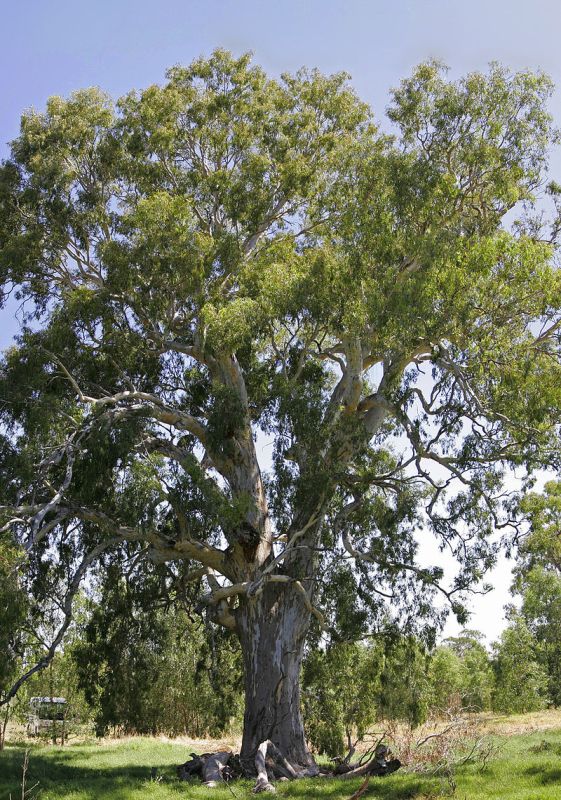
700-year-old River Red gum in the Wonga Wetlands, NSW - photo courtesy fir002
- potential koala habitat
- threatened ecological communities (could say ‘threatened habitat’ which is more punter friendly’)
- travelling stock reserves

Stop The Senseless Destruction Of Our Wildlife: Nature Conservation Council (NSW) Taking State Government To Court
By Nature Conservation Council (NSW)
Thousands of possums, quolls, koalas and gliders will be killed each year now that the Coalition government has gutted our tree-clearing laws. Nationals MPs, big agri-business and developers are being given powers to trash our precious woodlands under the new Biodiveristy Conservation Act. This new act will:- add extinction pressures to our state's 1000 threatened species;
- threaten our clean, reliable water supplies;
- turn our fertile land into wasteland through erosion and salinity;
- put landmark trees and bushland at risk; and
- add further to Australia's carbon pollution.
Biodiversity offsets law will drive extinctionsThe use of biodiversity offsetting schemes in NSW is adding extinction pressure to the very species those schemes are supposed to protect, a new report has found.
Biodiversity offsetting lets a developer clear bushland if they buy, protect and improve bushland elsewhere.
In theory, offsetting is supposed to ensure there is no loss in biodiversity values. In practice, offsetting is pushing species to the brink. Read our analysis of offsetting schemes in NSW over the past 10 years.
We are taking the Berejiklian government to court to scrap its destructive land-clearing laws, to defend nature and the rule of law.
More information on the case
Our case seeks to overturn the worst elements of the land-clearing laws on two grounds:- Failure to adequately consider the principles of Ecologically Sustainable Development
The Primary Industries Minister and the Environment Minister had a legal duty to consider the principles of Ecologically Sustainable Development when making the land-clearing codes. That includes proper consideration of internationally recognised legal principles such as intergenerational equity, the precautionary principle, and conservation of biodiversity. Documents obtained under freedom of information laws suggests the Ministers failed to do so.
2. Failure of the Primary Industries Minister to obtain concurrence of the Environment Minister
The Primary Industries Minister Niall Blair had a legal duty to obtain the “concurrence” (more simply the agreement) of the Environment Minister Gabrielle Upton before “making” the codes. Documents obtained under freedom of information laws suggest that Ms Upton approved the codes on August 25, one day after Mr Blair had made them on August 24.
If our legal challenge is successful, the government should scrap these bad laws, go back to the drawing board and make new codes that actually protect our threatened species.
We are being represented by public interest environmental lawyers EDO NSW. The case was referred to the Land and Environment Court on Friday, November 24, and we are awaiting a hearing date. Check back to this page for updates as they occur.
- add extinction pressures to our state's 1000 threatened species;
- threaten our clean, reliable water supplies;
- turn our fertile land into wasteland through erosion and salinity;
- put landmark trees and bushland at risk; and
- add further to Australia's carbon pollution.
- Failure to adequately consider the principles of Ecologically Sustainable Development
Berejiklian Government Allows Open Slather On Wildlife
By Sue Arnold
March 14, 2018
Originally Published in Independent Australia
Conservation groups and an increasingly aware public are aghast at the latest efforts by the Berejiklian Government to allow open slather on the environment and wildlife.
On 9 March, the Land and Environment Court ruled the NSW Government's land-clearing laws invalid because they had been made unlawfully. The judgement was in response to a legal challenge by the Nature Conservation Council last November, represented by the Environmental Defenders Office NSW.
The basis of the legal argument focused on the failure of the Primary Industries Minister Niall Blair to obtain the concurrence of the Environment Minister, Gabrielle Upton, before making the codes, as is required by law.
The codes are a disaster for the environment, with the Government’s own assessment that they will lead to a 45% increase in clearing including 99% of identified koala habitat on private land.
According to the Nature Conservation Council CEO, Kate Smolski,
“The laws were made against the advice of the scientific community and against the wishes of the vast majority of many thousands of people who made submissions.”
At 3.40pm on 9 March, legislation was passed effectively overturning the Land and Environment Court decision, by ensuring concurrence with the Environment Minister and thus legalising these appalling codes. The speed of action by the Berejiklian Government seems to point to the electoral power of vested interests. Is this Government hell-bent on destroying the environmental heritage of the State?
To put the ramifications of this reversal a World Wildlife Fund (WWF) report by Eco Logical Australia on the NSW Government’s proposed 'Equity Code Clearing Analysis' found that:
Over 2.2 million hectares of woody vegetation which has been identified as either being known or likely koala habitat could potentially be cleared under the equity code of the new land management framework. This equates to about 13% of the mapped woody vegetation across the State.
Berejeklian – who came to office via the resignation of former Premier Michael Baird – is a Premier without a vote. Her record on environmental issues is the stuff of nightmares. The reality is that under this unelected person, who promised "open and transparent government", the State now has no legislation capable of protecting native forests, wildlife or their habitats. Legal challenges are now virtually impossible to mount as provisions for legal action have been removed and/or repealed.
Let's start with native forests. According to the North East Forest Alliance, in February 2018, the NSW Government moved to change the rules to allow logging in "koala high use areas".
Regional Forest Agreements are currently up for public comment. Both the Turnbull Government and the Berejiklian lot are under increasing pressure to scrap Regional Forest Agreements from the Greens and environmental groups which say the current review process is a sham.
North Coast Environment Council coordinator Susie Russell said both governments were asking people to "drop-in" and comment on whether the RFAs should be extended for another 20 years.
Ms Russell said:
Our answer is a resounding "No". Both Governments have failed to complete the reviews that were required to occur every five years. They have belatedly cobbled together a "review", also out on public exhibition, but they aren’t waiting for the results, which is typical.'
The main function of the RFA is to exempt logging from Commonwealth Environment Protection and Biodiversity Conservation law. This has been a disaster around the country. Logging is like a law unto itself, with minimal state government oversight and community groups banned from taking legal actions when breaches of the law are identified.
We know both governments [NSW and Federal] are promoting intensification of logging, the introduction of clear-felling across most of the Mid North Coast, and weakening environmental protections for threatened species and headwater streams. They are also touting wood-fired power stations as "renewable" energy. Locations identified for such smokestacks are Bulahdelah, Kempsey and Grafton.
In 2015, under (then) Minister for the Environment Greg Hunt, the Federal Government introduced an intergovernmental memorandum of understanding (MOU) on a Common Assessment Method (CAM) and a species assessment plan. Under the Common Assessment Method (CAM), a species will be assessed by only one jurisdiction. NSW happily signed on to the MOU as did other States. No public comment was advertised or allowed; no mainstream media covered the issue. The MOU was yet another dirty deal done in secret with profound ramifications for wildlife species.
Last week, Liberal MLC Catherine Cusack proudly announced that the rapidly disappearing Port Stephens koala population would only be allowed to be listed once as "threatened" – no reason given – and that she believes that the new “single list” system will ensure that Port Stephens Koalas have the strongest possible legislative protections.
This is absolute crap. A scientific submission supporting the upgrading of the Port Stephens koala population from threatened to endangered, prepared by koala expert ecologist, David Paull was provided to the NSW Scientific Committee in March 2015.
The submission detailed the catastrophic loss of koala The data suggests an approximate 30% decline on the koala population since the early 2000s when it was estimated to be 300-500 mature animals (Lunney et al, 2007).
In October 2017, the NSW Scientific Committee made a preliminary determination to upgrade the Port Stephens koala population to "endangered" status.
In December 2017, the Committee advised David Paull and the Port Stephens Koala Society that:
Under Clause 4.1(5) of the 'Biodiversity Conservation Regulation 2017', a population of a species is not eligible to be listed as threatened if the species is separately listed as a threatened species under the 'Biodiversity Conservation Act 2016'. As the koala is listed as a threatened species under the Biodiversity Conservation Act and the 'Environmental Protection and Biodiversity Conservation Act l999', the population of the koala in the Port Stephens area is ineligible to be listed under the 'Biodiversity Conservation Act'.
In other words, a single national listing of koalas prohibits States from declaring specific populations as endangered. So, goodbye Port Stephens koalas as there is now no protection of habitat, no legal options to protect the species — just bullsh*t from Coalition politicians.
Then, the "SEPP 44" (State Environmental Planning Policy for Koala Habitat Protection) – a joke, as there’s no habitat protection – is to be amended and is now in draft form:
The proposed amendment of SEPP 44 will update the definitions of koala habitat. The definitions of core koala habitat and potential koala habitat will be replaced with definitions that identify the characteristics of plant communities which make up koala habitat and if there is evidence that koalas are present.
The proposed amendment and updated guidelines will support councils to prepare comprehensive plans of management. The proposed amendment will also replace the requirement for the preparation of individual plans of management with standardised requirements set out in updated guidelines.
Once again, another smoke and mirrors effort. No legal challenges are available under SEPP 44 and now we have plant communities as the priority when habitat mapping of koalas is readily available and relevant Councils are fully aware of koala habitat areas.
Perhaps it would be more honest if Berejiklian and her coterie of Ministers who support her closed and non-transparent Government were honest with the public.
Let’s hear the Premier’s policies of extinction loud and clear, straight from the horse’s mouth. Then we, the voting public who she’s supposed to represent, can make up our own minds who we will vote for. No bets, please.
You can follow Sue Arnold on Twitter @koalacrisis and Koala Crisis on Facebook here.
This work is licensed under a Creative Commons Attribution-NonCommercial-NoDerivs 3.0 Australia License
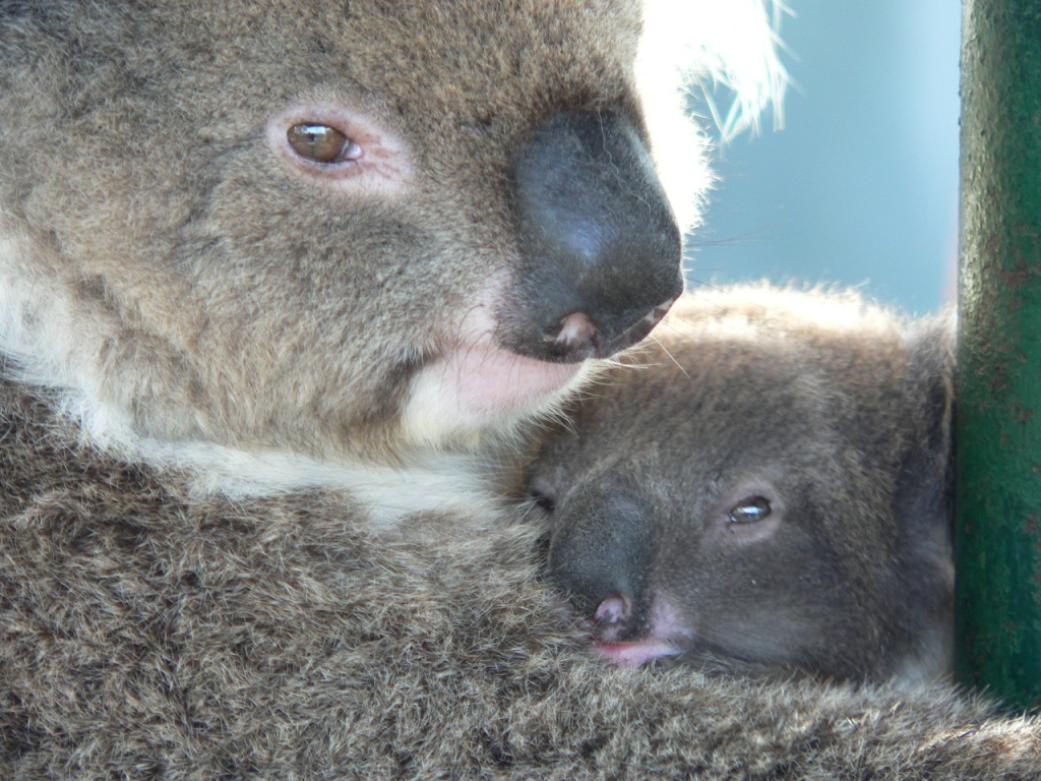
By Sue Arnold
March 14, 2018
Originally Published in Independent Australia
Conservation groups and an increasingly aware public are aghast at the latest efforts by the Berejiklian Government to allow open slather on the environment and wildlife.
On 9 March, the Land and Environment Court ruled the NSW Government's land-clearing laws invalid because they had been made unlawfully. The judgement was in response to a legal challenge by the Nature Conservation Council last November, represented by the Environmental Defenders Office NSW.
The basis of the legal argument focused on the failure of the Primary Industries Minister Niall Blair to obtain the concurrence of the Environment Minister, Gabrielle Upton, before making the codes, as is required by law.
The codes are a disaster for the environment, with the Government’s own assessment that they will lead to a 45% increase in clearing including 99% of identified koala habitat on private land.
According to the Nature Conservation Council CEO, Kate Smolski,
“The laws were made against the advice of the scientific community and against the wishes of the vast majority of many thousands of people who made submissions.”
At 3.40pm on 9 March, legislation was passed effectively overturning the Land and Environment Court decision, by ensuring concurrence with the Environment Minister and thus legalising these appalling codes. The speed of action by the Berejiklian Government seems to point to the electoral power of vested interests. Is this Government hell-bent on destroying the environmental heritage of the State?
To put the ramifications of this reversal a World Wildlife Fund (WWF) report by Eco Logical Australia on the NSW Government’s proposed 'Equity Code Clearing Analysis' found that:
Over 2.2 million hectares of woody vegetation which has been identified as either being known or likely koala habitat could potentially be cleared under the equity code of the new land management framework. This equates to about 13% of the mapped woody vegetation across the State.
Berejeklian – who came to office via the resignation of former Premier Michael Baird – is a Premier without a vote. Her record on environmental issues is the stuff of nightmares. The reality is that under this unelected person, who promised "open and transparent government", the State now has no legislation capable of protecting native forests, wildlife or their habitats. Legal challenges are now virtually impossible to mount as provisions for legal action have been removed and/or repealed.
Let's start with native forests. According to the North East Forest Alliance, in February 2018, the NSW Government moved to change the rules to allow logging in "koala high use areas".
Regional Forest Agreements are currently up for public comment. Both the Turnbull Government and the Berejiklian lot are under increasing pressure to scrap Regional Forest Agreements from the Greens and environmental groups which say the current review process is a sham.
North Coast Environment Council coordinator Susie Russell said both governments were asking people to "drop-in" and comment on whether the RFAs should be extended for another 20 years.
Ms Russell said:
Our answer is a resounding "No". Both Governments have failed to complete the reviews that were required to occur every five years. They have belatedly cobbled together a "review", also out on public exhibition, but they aren’t waiting for the results, which is typical.'
The main function of the RFA is to exempt logging from Commonwealth Environment Protection and Biodiversity Conservation law. This has been a disaster around the country. Logging is like a law unto itself, with minimal state government oversight and community groups banned from taking legal actions when breaches of the law are identified.
We know both governments [NSW and Federal] are promoting intensification of logging, the introduction of clear-felling across most of the Mid North Coast, and weakening environmental protections for threatened species and headwater streams. They are also touting wood-fired power stations as "renewable" energy. Locations identified for such smokestacks are Bulahdelah, Kempsey and Grafton.
In 2015, under (then) Minister for the Environment Greg Hunt, the Federal Government introduced an intergovernmental memorandum of understanding (MOU) on a Common Assessment Method (CAM) and a species assessment plan. Under the Common Assessment Method (CAM), a species will be assessed by only one jurisdiction. NSW happily signed on to the MOU as did other States. No public comment was advertised or allowed; no mainstream media covered the issue. The MOU was yet another dirty deal done in secret with profound ramifications for wildlife species.
Last week, Liberal MLC Catherine Cusack proudly announced that the rapidly disappearing Port Stephens koala population would only be allowed to be listed once as "threatened" – no reason given – and that she believes that the new “single list” system will ensure that Port Stephens Koalas have the strongest possible legislative protections.
This is absolute crap. A scientific submission supporting the upgrading of the Port Stephens koala population from threatened to endangered, prepared by koala expert ecologist, David Paull was provided to the NSW Scientific Committee in March 2015.
The submission detailed the catastrophic loss of koala The data suggests an approximate 30% decline on the koala population since the early 2000s when it was estimated to be 300-500 mature animals (Lunney et al, 2007).
In October 2017, the NSW Scientific Committee made a preliminary determination to upgrade the Port Stephens koala population to "endangered" status.
In December 2017, the Committee advised David Paull and the Port Stephens Koala Society that:
Under Clause 4.1(5) of the 'Biodiversity Conservation Regulation 2017', a population of a species is not eligible to be listed as threatened if the species is separately listed as a threatened species under the 'Biodiversity Conservation Act 2016'. As the koala is listed as a threatened species under the Biodiversity Conservation Act and the 'Environmental Protection and Biodiversity Conservation Act l999', the population of the koala in the Port Stephens area is ineligible to be listed under the 'Biodiversity Conservation Act'.
In other words, a single national listing of koalas prohibits States from declaring specific populations as endangered. So, goodbye Port Stephens koalas as there is now no protection of habitat, no legal options to protect the species — just bullsh*t from Coalition politicians.
Then, the "SEPP 44" (State Environmental Planning Policy for Koala Habitat Protection) – a joke, as there’s no habitat protection – is to be amended and is now in draft form:
The proposed amendment of SEPP 44 will update the definitions of koala habitat. The definitions of core koala habitat and potential koala habitat will be replaced with definitions that identify the characteristics of plant communities which make up koala habitat and if there is evidence that koalas are present.
The proposed amendment and updated guidelines will support councils to prepare comprehensive plans of management. The proposed amendment will also replace the requirement for the preparation of individual plans of management with standardised requirements set out in updated guidelines.
Once again, another smoke and mirrors effort. No legal challenges are available under SEPP 44 and now we have plant communities as the priority when habitat mapping of koalas is readily available and relevant Councils are fully aware of koala habitat areas.
Perhaps it would be more honest if Berejiklian and her coterie of Ministers who support her closed and non-transparent Government were honest with the public.
Let’s hear the Premier’s policies of extinction loud and clear, straight from the horse’s mouth. Then we, the voting public who she’s supposed to represent, can make up our own minds who we will vote for. No bets, please.
You can follow Sue Arnold on Twitter @koalacrisis and Koala Crisis on Facebook here.
This work is licensed under a Creative Commons Attribution-NonCommercial-NoDerivs 3.0 Australia License

Revelations Of Political Intervention On Environmental Groups During Regional Forest Agreement Consultation Highlights A Sham Process
March 23, 2018 BY NPA NSW Revelations that Federal Senator Anne Ruston wrote to the National Parks Association of NSW (NPA) questioning our integrity during the recent Regional Forest Agreement (RFA) consultation process should concern anyone who takes seriously the importance of community input to policy.
Instead of considering feedback from environment groups and their supporters to improve the environmental performance of logging, Senator Ruston instead dismissed concerns and recommitted to new RFAs.
The Senator’s actions highlight that the current RFA process is not community consultation, it’s box-ticking for a pre-determined outcome.
Senator Ruston’s extraordinary intervention saw NPA accused of deliberately misleading the Australian public on the performance of the RFAs.
It’s an accusation that NPA rejects completely. In fact it is Senator Ruston who failed to provide evidence to back up the assertions in her letter, instead repeating industry assertions that don’t stand up to scrutiny.
NPA CEO, Alix Goodwin, said: “As a non-government environment charity, whose financial support comes from members and donors, honesty, integrity and trust are our core values.
“In order to foster trust, we pride ourselves on evidence-based advocacy. And that trust is why we’re proudly celebrating our 60th year of protecting the biodiversity of NSW.
“The submission that so annoyed Senator Ruston was based on a review of RFAs that we presented to Senator Ruston’s office in April 2016. We received no feedback that day that any of the content was misleading or dishonest, nor have we since then.
“We can only assume that the Senator’s letter was triggered by our efforts to drive submissions from the wider community on a matter of public importance; the RFAs cover 2 million hectares of public land in NSW.
“We wrote a detailed, fully referenced, response to Senator Ruston and asked her to withdraw her accusations based on the evidence we presented. We received no response.
“In order to protect our reputation, we were left with little choice but to release the letter to the media to give us a platform upon which to publicly reject the Senator’s assertions.
“We again call on Senator Ruston to withdraw her statements, and we call on the Prime Minister to reconsider the Government’s commitment to RFAs based on the overwhelming weight of evidence that they are a failed model for forest management.”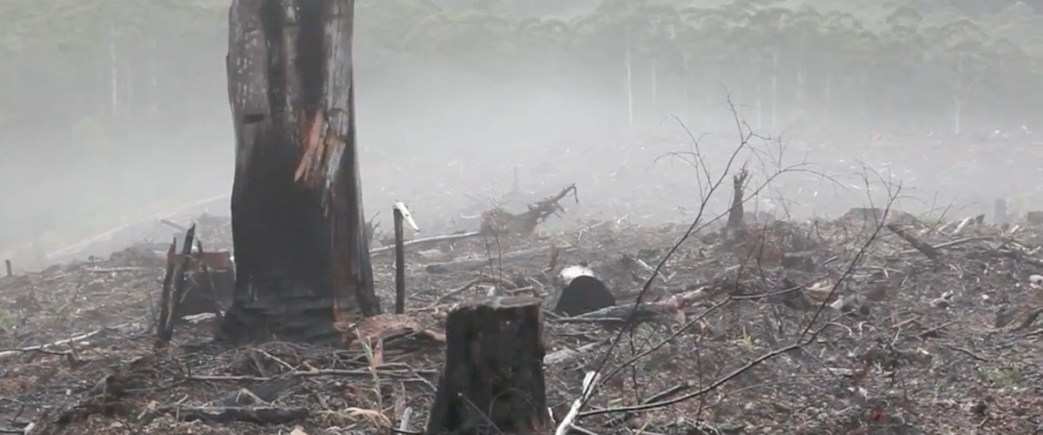

Powerful Owl Release
March 18, 2018: Avalon Preservation AssociationPNHA's Jacqui Marlow has advised that a Powerful Owl chick has been released in Plateau Park following its recuperation in Taronga Park.
If you see it there being harassed, or even if you see it at all, can you please phone her on 0458 194 127.
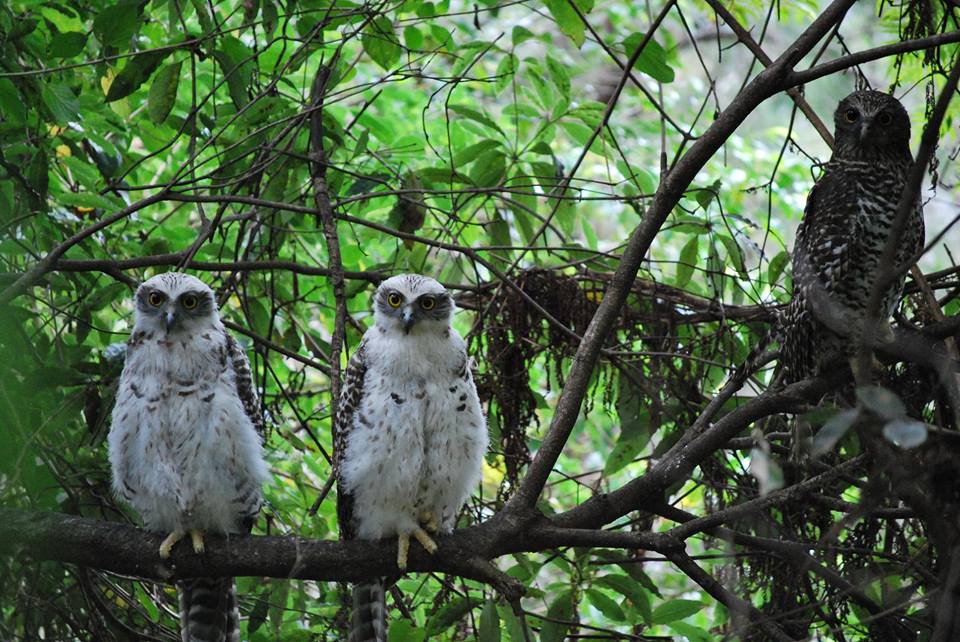
Powerful owl family - photo courtesy PNHA

Artificial Heart Technology Gets Federal Funding
- $1.5 million invested by BioScience Managers in Avita Medical Ltd for improved skin regeneration through a unique process using the patient’s own skin;
- $3.2 million invested by Brandon Capital Partners in Aravax Pty Ltd for a novel form of peptide immunotherapy to treat peanut allergy; and
- $1 million invested by Brandon Capital Partners in GI Therapies Pty Ltd to develop a device to treat a range of gastrointestinal motility disorders.
Surprise Cell Death Discovery Provides Birth Defect Clues
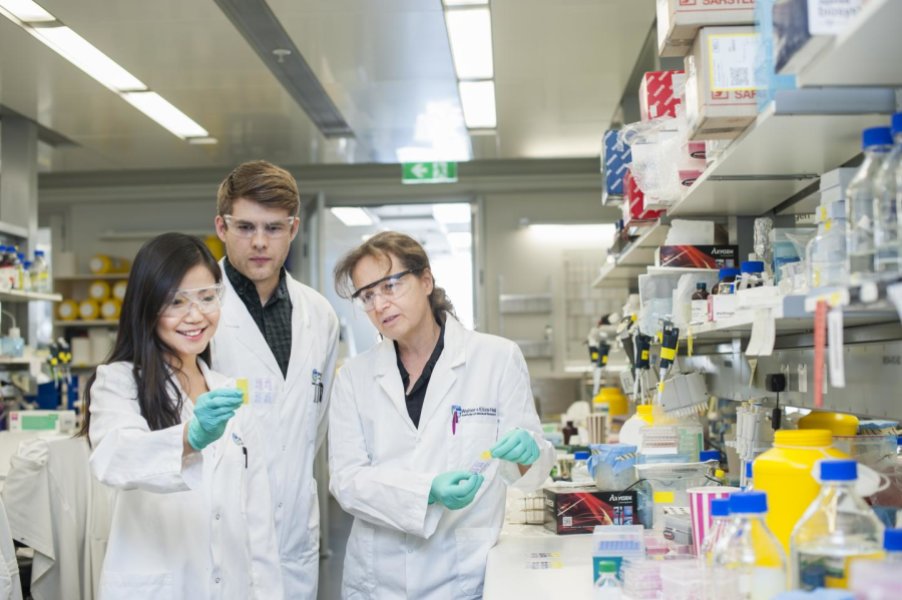
Victoria Cross Recipient Honoured In Lasting Tribute
Digital Licences For All NSW Drivers
New Information Tool Holds Key To Solving Homelessness Crisis
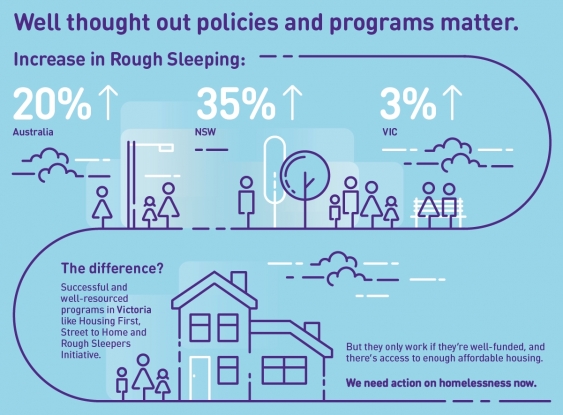
Deep Field Ice Core Provides Snapshot Of Antarctic Climate History
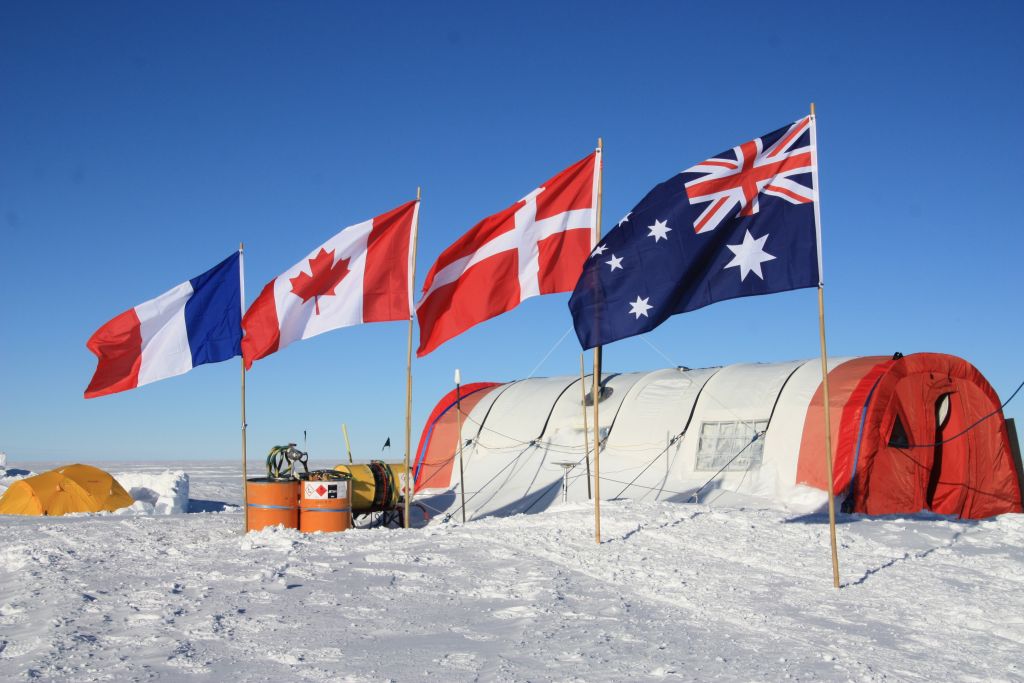
Autonomous Glider Can Fly Like An Albatross, Cruise Like A Sailboat
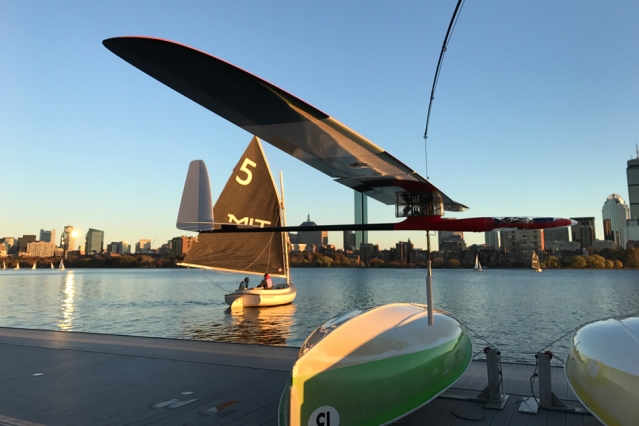
Safety Improvements On The Way Along The Illawarra Highway
Introduction To Water Engineering Annual Field Trip
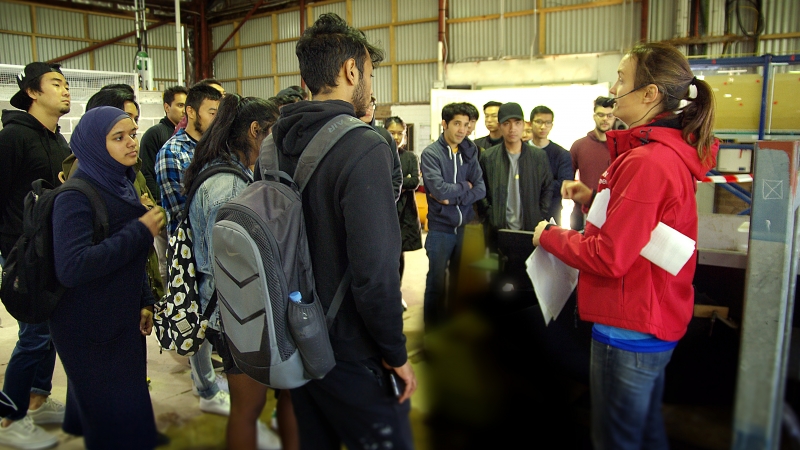
EPA Fines AGL After Data Collection Comes Up Short: Camden Gas Project
Sydney Water To Pay $15,000 For Discharge At Castle Hill
Explaining The History Of Australia's Vegetation
Please Help: Contribute To Significant Trees Register For Our Area
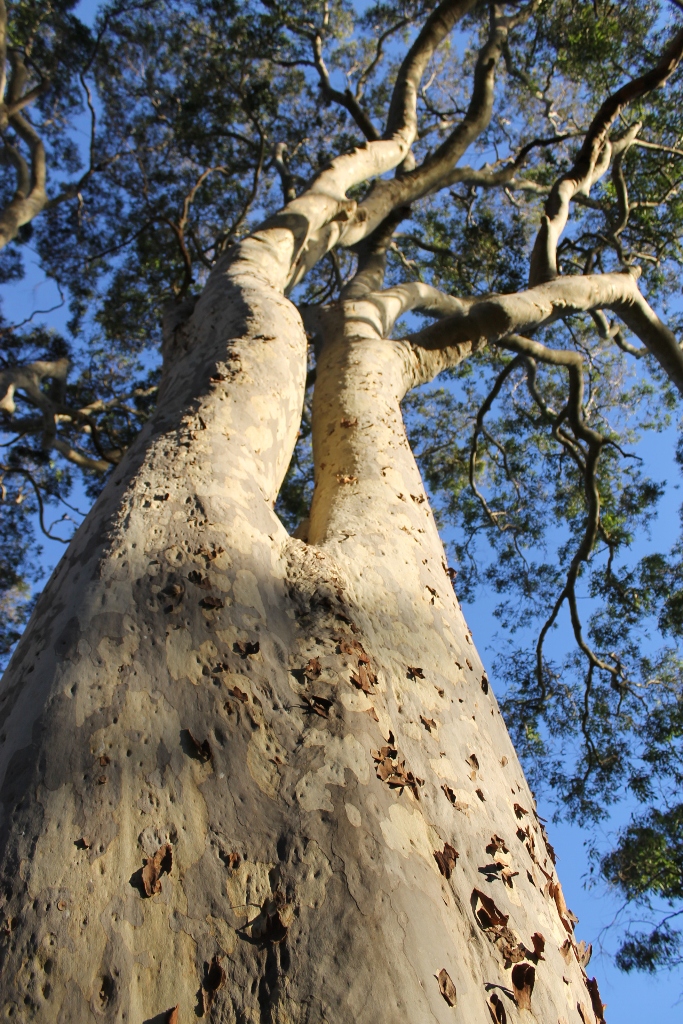
Festival Of Dangerous Ideas 2018
Festival Of Dangerous Ideas – Teaser
Building Antarctica's First Paved Runway
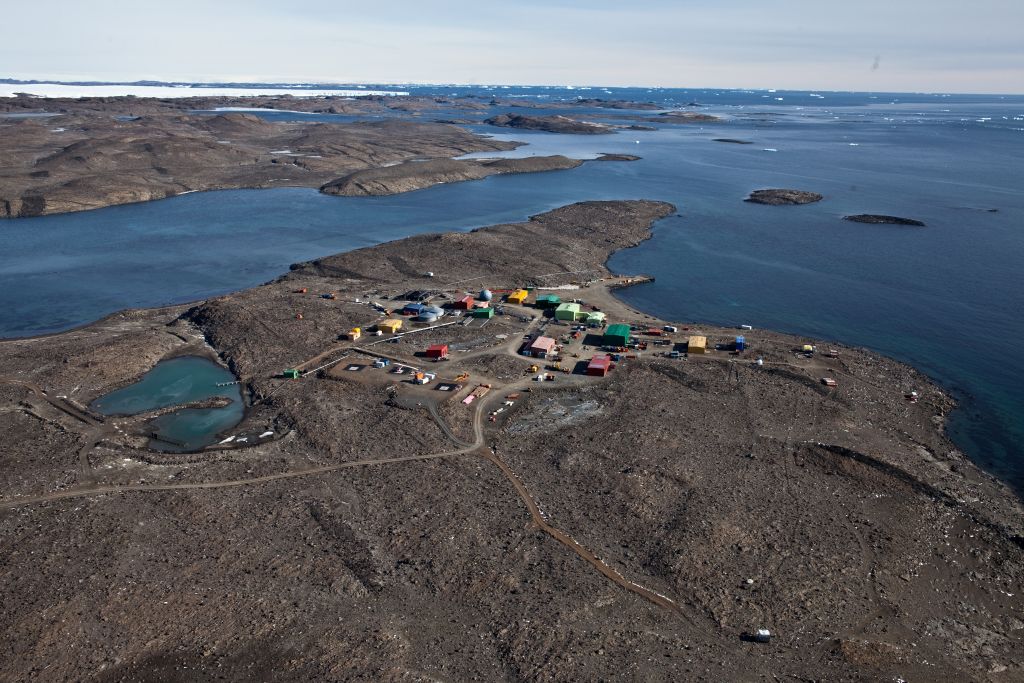
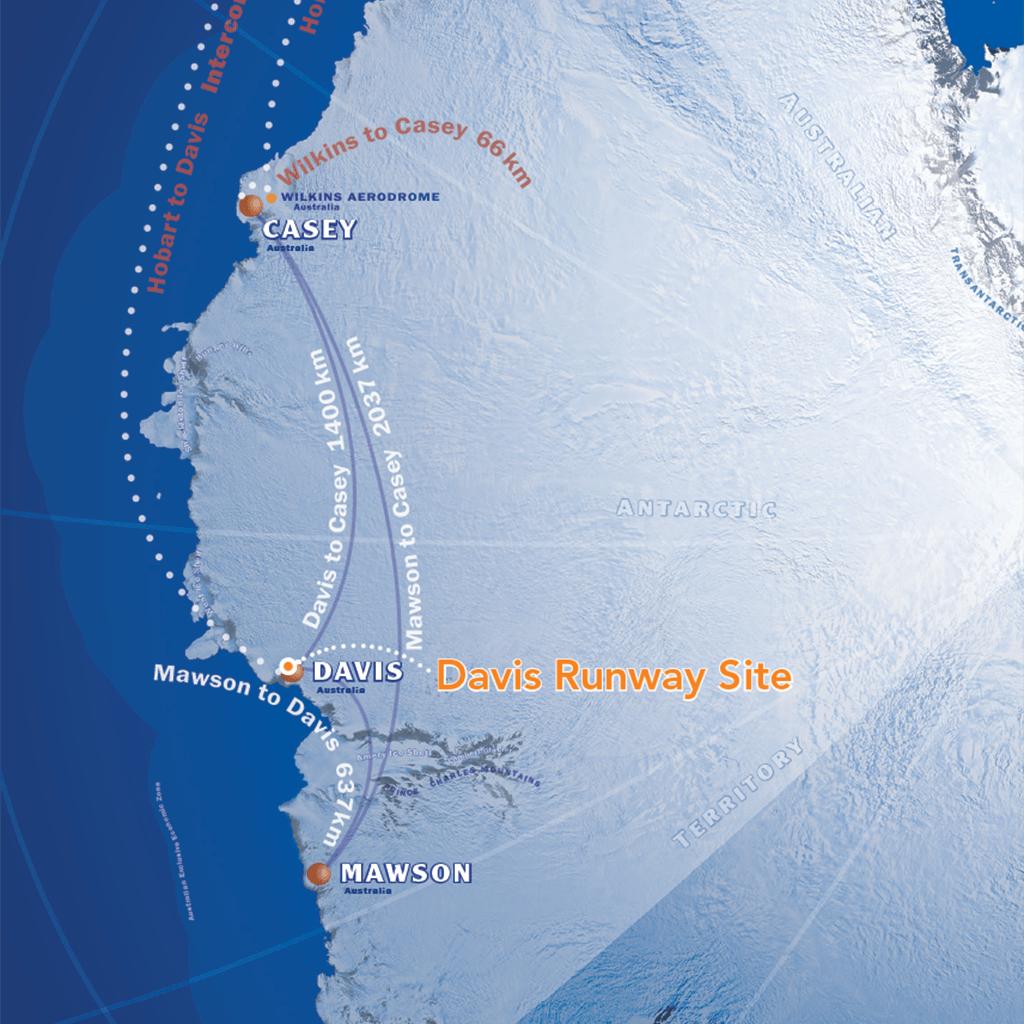
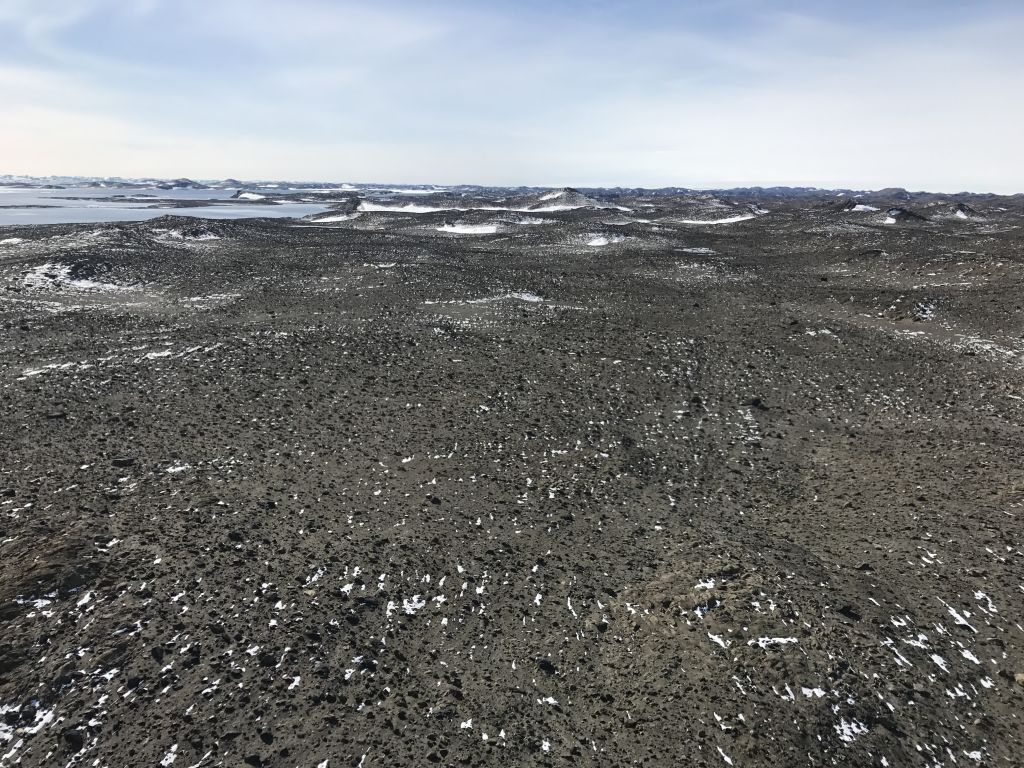
Zebra Finches – Capertee Valley
Tiny Doors: An A-Door-Able Public Art Project For Young People
%20for%20nbc%202018.jpg?timestamp=1526789750712)
The Journey To Pluto, The Farthest World Ever Explored
Disclaimer: These articles are not intended to provide medical advice, diagnosis or treatment. Views expressed here do not necessarily reflect those of Pittwater Online News or its staff.